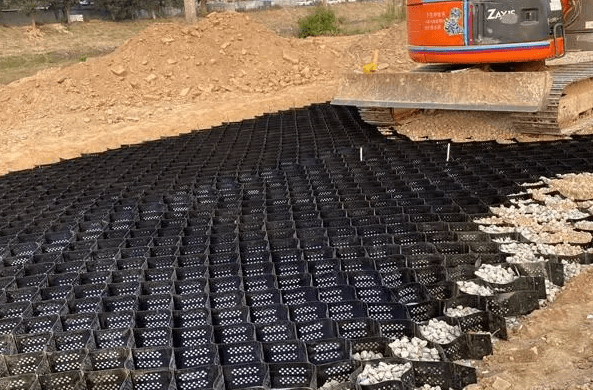The Role of Geocells
The Role of Geocells
Geocell is an economical, environmentally friendly, and efficient geotechnical material, usually made of high-density polyethylene. Its main functions include the following aspects:
Geocell is a three-dimensional structure made on the basis of geotechnical materials, usually made of plastic materials such as high-density polyethylene (HDPE) or polypropylene. Its main function is to form a reinforced structure in the soil, enhance the bearing capacity and stability of the foundation, and thus improve the engineering properties of weak soil. At the same time, geocells can also be used for protection, isolation, filtration, and sedimentation, and have been widely used in various geotechnical engineering fields, such as embankments, dams, seawalls, docks, soil erosion control, and so on.
1.Filtering and isolation: The geocell can serve as a filtering layer to prevent the infiltration of permeable soil into the geofill layer, thereby reducing erosion and sediment loss of the geofill layer. At the same time, it can also isolate and separate soil layers with different particle sizes, preventing them from mixing and eroding each other.
2.Strengthening and stabilizing: Geogrids can enhance the stability of soil layers, improve bearing capacity and shear strength, and prevent soil settlement and deformation under dynamic loads, thereby extending the engineering life.
3.Drainage and water retention: The geocell itself has a large number of micropores and voids, which can increase the soil's permeability and drainage capacity, while also maintaining a certain water content in the soil to ensure the needs of plant growth.
4.Ecological restoration: Geogrids can be an important material for ecological restoration, used for plant sand fixation, soil and water conservation, wetland construction, and other aspects, helping to promote the improvement of the ecological environment.

